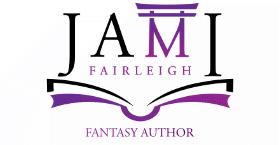
Finding Balance with Multiple Writing Projects

In the past, I’ve struggled to balance multiple writing projects, so when I recently attempted working on two books simultaneously, I wasn’t sure it would mesh for me. But instead of creative burnout, I found I’d developed a way to manage the brain shifts I needed to transition between reading, writing, and revising.
The Balance Between Reading, Writing, and Revising
Many authors struggle with finding a balance between reading and writing. Although my reading velocity has slowed as my writing has picked up, I’m still averaging between 4-6 books a month. While I’ve always been a reader, I think reading is even more important now that I’m writing.
Unless I’m between projects, I fit reading into my ‘between’ times. I read while waiting for an appointment or while the oven is heating. I read ebooks on my phone before an event begins and printed books before I go to sleep. Most of the fiction I choose these days is speculative, but I try to read a balance of trad and indie published books. My nonfiction reads are typically craft or mindset books, and again, I try to balance traditional and independently published books there, too.
Writing and Revising
My original goal was to write Charcoal and Smoke (Book 3) and Ink and Waves (Book 4) back to back. So even though I’m working on revisions of Book 3, I didn’t stop writing! Monday through Friday, I’ve continued to take part in the #5AMWritersClub and spend between 60 to 90 minutes on the draft of Book 4 each morning. Improbably, it’s working and I’m nearly 10,000 words into the manuscript.

My primary writing focus these days is on revising Book 3. Right now, I’m reading through my finished draft on a reMarkable tablet. While reading a chapter, I make handwritten notes on character, scene, and language. Once I’ve finished each chapter, I write a brief summary of what happens, what I want to change or strengthen, and notes on things I need to do in previous or subsequent chapters. To do this, I’m using Plottr to store my revision notes. In the same file I plotted the book, I added three new plotlines to my file and use one to summarize the text, one to make notes for revision, and one to dig into specific components of each scene.
What I Didn’t Expect
Because I’ve struggled with the transition from writing to editing and back to writing, I worried this experiment would fail. That instead of becoming more productive, I’d stall and get nothing done.
That it would drain my creative energy.
Happily, that hasn’t happened. I wake ready to work, completely focused on the story unfurling before my eyes. After my evening revision sessions, I go to sleep thinking about how to shape Book 3.

However, while I’m making progress on both projects, neither is moving forward fast. At least, not as fast as they would if I were focusing on one over the other.
To be honest, there’s a part of me that misses those big word-count days. I also miss the boost from checking off more than two chapters in a day from my revision list. But, I’m enjoying each activity more because I’m not so bound to either.
Something else I didn’t expect was how useful making notes in my Plottr files would be. I enjoy flipping back and forth between what I intended to do and what I accomplished. This has given me insight into where the story should go. As a bonus, it’s also let me evaluate if I’ve inadvertently dropped a story thread I intended to use.
Where I’m Still Seeking Balance
While I’ve found some workable balance between reading, writing, and revisions, there are other parts of my writing life that are completely off kilter. It may be the lack of time or depleted mental energy, but I haven’t moved forward with querying my middle grade novel. I’ve done little with short fiction, and even less with marketing the fiction I’ve produced. I’ve purchased several online courses but haven’t made the time to move forward with them.
I’m also struggling to find a balance between writing and life. While my day job provides a nice big break between writing and revising, my schedule leaves little time for anything else. And even with my daily 3 to 4 mile walk, I’m still sitting behind a computer for an average of over thirteen hours a day.
In an ideal world, I’d learn to dictate and put one of those standing desk/treadmill combinations in my office. But, my current office doesn’t have the space. And, frankly, I’m not sure I have the physical balance to walk, read, write, and work. So, I have more work to do in figuring out how to make sense of the hours I have available to me. But this, like my writing, is an ever-evolving work in progress.
Have you found your balance?

Header Photo by Beatriz Pérez Moya on Unsplash
